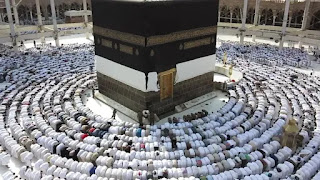In the next half century or so, the Christianities' reign as the world's largest religion may come to an end, according to a newly released report that is based on Pew's original population growth projections for religious groups. Research Centers. In fact, Muslims will grow more than twice as fast as the total world population between 2015 and 2060 and in the second half of this century they will likely overtake Christians as the world's largest religious group.
While the global population is projected to grow 32% in the coming decades, the number of Muslims is expected to rise 70%, from 1.8 billion in 2015 to almost 3 billion in 2060. In 2015, Muslims made up 24, 1% of the world's population. Forty-five years later, they are expected to make up more than three out of every ten people in the world, 31.1%.
Try our email course on Muslims and Islam
Learn about Muslims and Islam through four short lessons delivered to your inbox every other day.
Register now! The main reasons for the growth of Islam ultimately involve simple demographics. For starters, Muslims have more children than members of the other seven major religious groups analyzed in the study. Muslim women have an average of 2.9 children, significantly above the next highest group of Christians at 2.6 and the average for all non-Muslims at 2.2. In all major regions where there is a sizeable Muslim population, Muslim fertility exceeds non-Muslim fertility. Muslim population growth is also aided by the fact that Muslims have the youngest median age of 24 in 2015 of all major religious groups, seven years younger than non-Muslims' median age of 32.
A larger proportion of Muslims will soon be at the point in their lives when people start having children. This, combined with high fertility rates, will accelerate the growth of the Muslim population. More than a third of Muslims are concentrated in the regions of Africa and the Middle East that are projected to have the largest population increases. But even within these high-growth regions, as well as others, Muslims are expected to grow faster than members of other groups. For example, Muslims in sub-Saharan Africa are on average younger and have higher fertility than the general population of the region. In fact, Muslims are expected to grow as a percentage of all regions except Latin America and the Caribbean, where relatively few Muslims live.
The same dynamic holds true in many countries where Muslims live in large numbers alongside other religious groups. For example, the number of Muslims in India is growing at a faster rate than the country's majority Hindu population and is projected to rise from 14.9% of India's population in 2015 to 19.4% or 333 million. people in 2060. And while there were similar numbers of Muslims and Christians in Nigeria as of 2015, Muslims have higher fertility there and are expected to grow to become a solid majority of Nigeria's population of 60.5% in 2060.
Meanwhile, religious change, which is expected to stunt the growth of Christians by an estimated 72 million between 2015 and 2060, is not expected to have a net negative impact on Muslim population growth. This is an update to a post that was originally published on April 23, 2015.














0 Comments